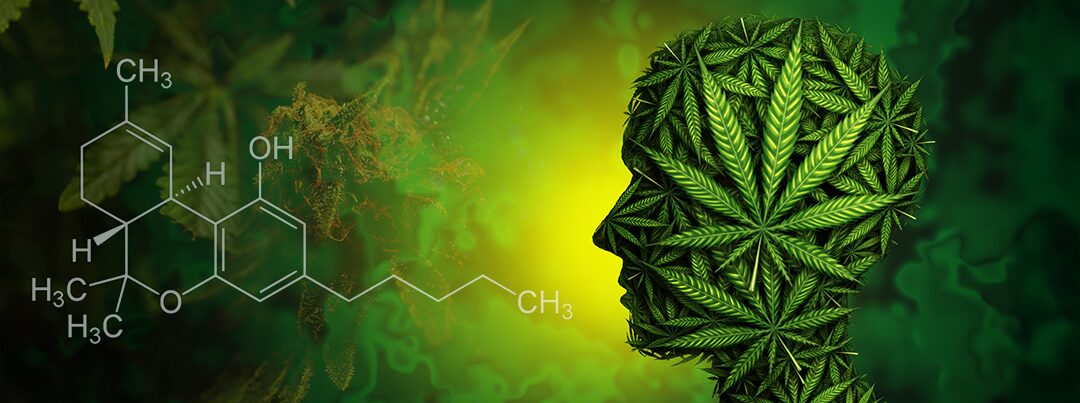If you’ve had any exposure to weed culture, you’re probably familiar with the cannabis plant’s greatest hits: THC and CBD.
These two cannabinoids get a lot of attention for their different but equally desirable effects. For THC, it’s the classic psychedelic high. CBD is favored by those looking for stress relief, pain management and relaxation without intoxication.
But did you know the cannabis plant contains hundreds (yes, hundreds) of cannabinoids, each with its own unique properties?
We’re not going to run through the whole list, but we will touch on some of the other cannabinoids that are starting to get their due. Understanding these compounds will help you make informed choices about cannabis and discover new ways it might fit into your lifestyle.
What Are Cannabinoids?
Cannabinoids are chemical compounds that are found inside the resin of the cannabis plant and interact with the body’s endocannabinoid system. Tetrahydrocannabinol (THC) and Cannabidiol (CBD) are the best known and occur in the highest quantity within the cannabis plant, but about 160 different cannabinoids have been identified so far.
Cannabinoid effects vary depending on their molecular structure. While THC is known for its psychoactive effects, CBD is non-psychoactive and good for calming and wellness practices.
What Are the Other Cannabinoids?
Beyond THC and CBD, scientists have discovered other cannabinoids that exist in much smaller quantities in the cannabis plant. These other compounds are also known as rare cannabinoids because they are less abundant than THC and CBD and because they have not been as thoroughly studied.
Rare cannabinoids make up about .05% to 10% of the total mass of a cannabis plant. By contrast, THC makes up about 16% of an average cannabis plant. Because rare cannabinoids exist in much smaller amounts, it was harder to isolate and study them.
As interest and legality of cannabis expands, researchers are diving in to understand the effects and benefits of rare cannabinoids.
Rare Cannabinoids: A Closer Look
Like their more popular cousins, each rare cannabinoid has a unique effect on the brain and body. Here is a quick look at a few of them and how they may make you feel.
THCV (Tetrahydrocannabivarin): Diet Weed
THCV has been called diet weed or the energy cannabinoid for its penchant for curbing appetite and giving users an energy boost. It’s mainly found in combination with THC, and some have said it can bring down some of the intoxicating effects of THC alone.
There isn’t much human research on THCV, but the theory is that it may block the CB1 receptor, which is responsible for appetite, but the few human studies conducted have not been conclusive.
How you’ll feel: energetic, clear-headed
CBN (Cannabinol): The Sleepy Cannabinoid
As the cannabis plant matures and is exposed to heat or light, the THC inside begins to oxidize and morph into CBN. Like its mother cannabinoid, CBN is psychoactive but much less potent than THC.
CBN is a great mellowing agent. Its nickname, the sleepy cannabinoid, doesn’t disappoint. Pair it with THC and CBD for the ultimate relaxing hit. It’s also known to share some anti-inflammatory characteristics with CBD and may even be able to help fight bacterial infections.
How you’ll feel: sleepy, relaxed
CBC (Cannabichromene): The Potent Pain Eraser
CBC was discovered in the 1960s, and it’s been shown to have similar benefits as CBD when it comes to pain and mood elevation. It’s non-psychoactive and best used in wellness applications. CBC works best when it’s along for the ride with other cannabinoids (known as the entourage effect). Use it for pain relief, to fight inflammation and to boost your mood.
How you’ll feel: calm
CBG (Cannabigerol): The Essential Cannabinoid
CBG is known as the mother of all cannabinoids. THC and CBD are both synthesized from CBG in its acidic form (CBGA). CBG has shown anti-inflammatory and anti-anxiety capabilities. Some early research shows it may even contribute to brain health by protecting neurons from damage. That’s exciting news for conditions like Alzheimer’s.
How you’ll feel: calm, less pain
CBDV (Cannabidivarin):
CBDV shares some molecular structure with CBD and is non-intoxicating. It has some unique physiological effects. It has been shown to support memory and cognitive functions — even help with sociability and focus.
How you’ll feel: focused, less irritable
Find the Best Rare Cannabinoid for You
The world of rare cannabinoids is much wider than THC and CBD. If you’re interested in exploring lesser-known cannabinoids, stop by either our Coos Bay or Cannon Beach shop. Our knowledgeable budtenders can direct you toward the best compound for you.

